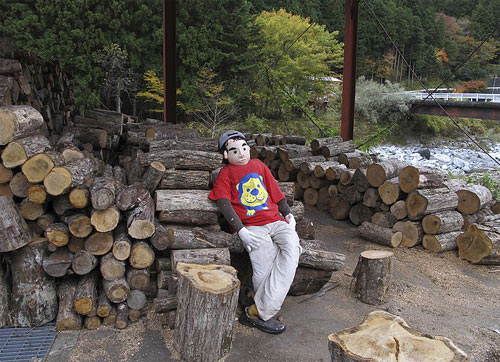
Japan's population began to decline in 2010 from a peak of 128 million. Without a drastic increase in the birthrate or a loosening of the staunch Japanese resistance to immigration, it is forecast to fall to about 108 million by 2050 and to 87 million by 2060.
日本人口在2010年开始从1.28亿的高峰下降。若没有出现大幅增长的出生率,或放松人口移民,日本人口预计到2050年将下降到1.08亿,到2060年将下降到8700万。
By then, four in 10 Japanese will be over 65 years old.
到那时,40%的日本人将会是年龄超过65岁的老人。
When Ms Tsukimi returned to her hometown 13 years ago, she initially tried farming. Thinking her radish seeds may have been eaten by crows, she decided to make some scarecrows.
13年前,当月见绫野返回家乡时,她最初尝试务农。考虑到她的萝卜籽可能会被乌鸦吃掉,她决定做些稻草人。
Now there are more 100 scattered around Nagoro and other towns in Shikoku.
目前,已经有100多个稻草人分散在Nagoro和四国岛城镇的各处。
Like handcarved Buddhist sculptures, each has its own whimsical expression. Some sleep, their eyelids permanently shut. Others cuddle toddler scarecrows, or man ploughs and hoes.
像手工雕刻的佛教雕塑一样,每一个稻草人都拥有自己古怪表情。有的在睡觉,眼睑永久地阖着。但大多数都“清醒着”,等待远道而来的游客观赏拍照。
'If I hadn't made these scarecrows, people would just drive right by,' she said.
“如果我没有做这些稻草人,人们就不会绕道来参观了。”月见绫野说。
